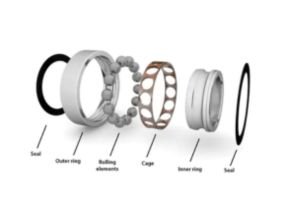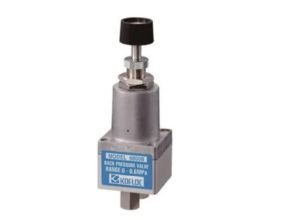Description of Bearings Components and Their Functions
Bearings are used in a variety of industrial applications, including cars, home appliances, and heavy machinery. Bearings are mechanical components designed to support relative motion between two or more machine elements by reducing friction. The components in bearings work together to support axial and radial loads and enable rotation or linear motion.

Each part of the bearing has its own function and role. Here are the functions of each part that you need to know:
Feature of Bearings Components and Their Functions
- Friction Reduction: Bearings reduce friction between moving surfaces to improve operating efficiency.
- Load Endurance: Able to withstand radial (perpendicular to the shaft) and axial (parallel to the shaft) loads.
- High Precision: Modern bearings are designed with a high degree of precision to support applications that require tight tolerances.
- Quality Materials: Made from steel, ceramic, or composite materials that resist wear and corrosion.
- Variety of Design: Available in different types (e.g., ball bearings, roller bearings, and thrust bearings) to meet specific needs.
Application of Bearings Components and Their Functions
- Automotive Industry: For wheels, transmissions, alternators, and suspension systems.
- Manufacturing and Machinery: Conveyor belts, electric motors, and other production tools.
- Home Appliances: Fans, washing machines, and other power tools.
- Aerospace: Aircraft and rockets to ensure reliability in extreme conditions.
- Mining: To support heavy machinery in harsh environmental conditions.
- Construction: Cranes, excavators and other heavy equipment.
Specification of Bearings Components and Their Functions
- Bearing Types: Ball Bearings.
- Roller Bearings (cylindrical bearings).
- Needle Bearings.
- Thrust Bearings.
- Materials: Carbon steel, stainless steel, ceramic, or special metal alloys.
- Dimensions: Available in micro to large sizes, as per the application.
- Load Capacity: Depends on bearing type, ranging from light to very heavy loads.
- Maximum Speed: Customized to the application, up to tens of thousands of rotations per minute (RPM).
Lubricant: Oil or grease with low to high temperature specifications. - Certifications: ISO 9001, ABEC (Annular Bearing Engineering Committee), or other standards
Source :fractory.com
Read More Artikel :
- Bearing Components and Their Functions
- Permco Hydraulics Component System
- NSK Bearing
- Quincy WIS Oil-Free Water Injected Screw Compressors
- Fluid Components International





